Mercedes-Benz launches Van Electric Architecture
Mercedes-Benz unveiled its ‘Van Electric Architecture’, or VAN.EA. It will form the basis for all newly developed medium-sized and large vans from 2026. The aim is to increase the share of all-electric vans to 50 per cent by 2030.
As an interim target for 2026 (and with its current portfolio of electric vans), the company aims for a share of 20 per cent. For comparison: in 2022, 14,700 of all 411,000 Mercedes vans delivered had an electric drive, corresponding to a share of just 3.6 per cent. The big leap will follow after 2026 with the first VAN.EA models.
The platform was developed as a “Purpose BEV” architecture. According to the manufacturer, it should reduce the portfolio variants by more than half compared to the current ICE models without restricting the customers’ application options. Mercedes-Benz Vans is placing particular focus on efficiency and performance with VAN.EA. All areas of the vehicle are consistently optimised, including the aerodynamics, the electric drive train, the tyres and the body.
The goal is to achieve the longest possible range with the optimal battery capacity for the customer’s intended use – because vehicle weight and price directly depend on battery size. And: The VAN.EA enables a “clear differentiation between private luxury vans and premium commercial vans as well as for maximum synergies”. What that means exactly is not spelt out. However, it is an important point for the current commercial vans with electric drive. A commercial customer wants to avoid paying for an unnecessarily large battery. He only wants to cover the range he needs. On the other hand, a private customer wants to be able to drive more than 300 kilometres with his expensive premium van or electric camper on holiday.
Up to 500 km range for private vans
The scaling of the different vehicle sizes is to take place via the platform’s modular design with front, middle and rear modules. The front module consists of the electric drive and the front axle. The centre module scales the vehicle length. That is also where the standardised battery case is located, in which high-voltage batteries with different capacities are installed. The rear module is available in two versions, with an electric motor for the all-wheel drive variants of VAN.EA and without for the front-wheel drive variants.
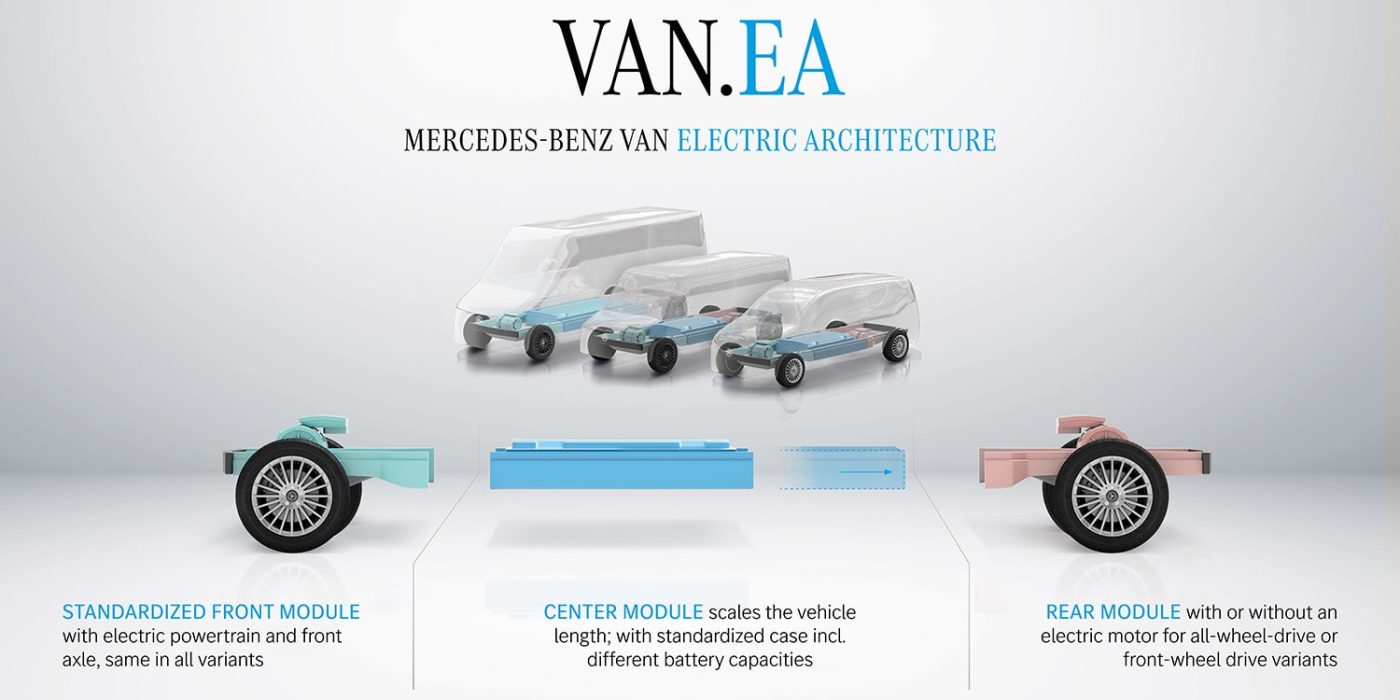
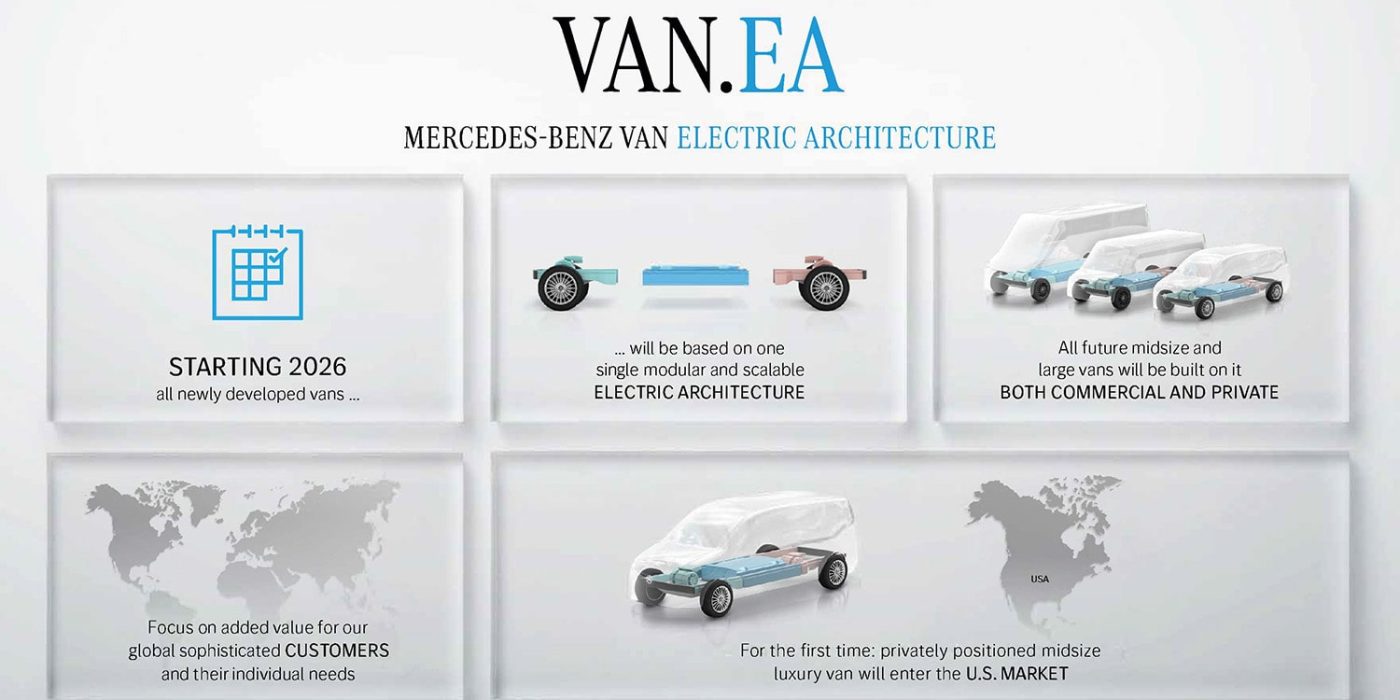
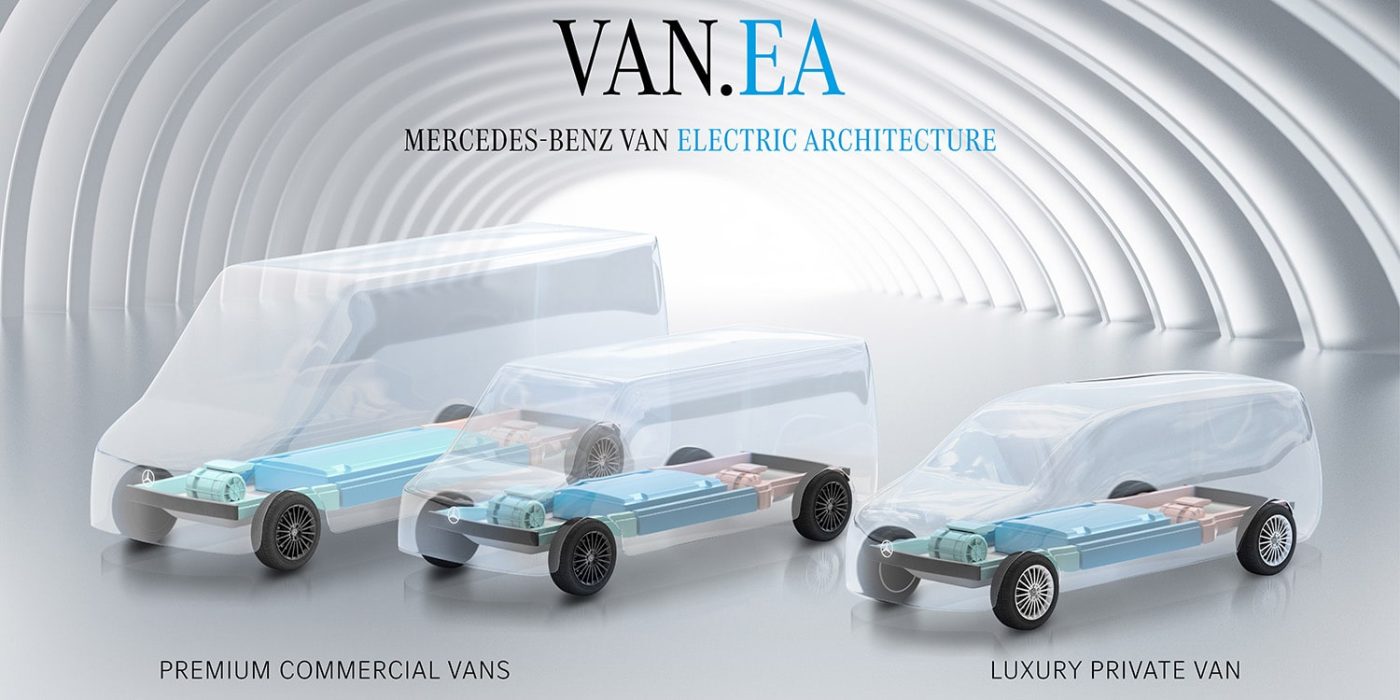
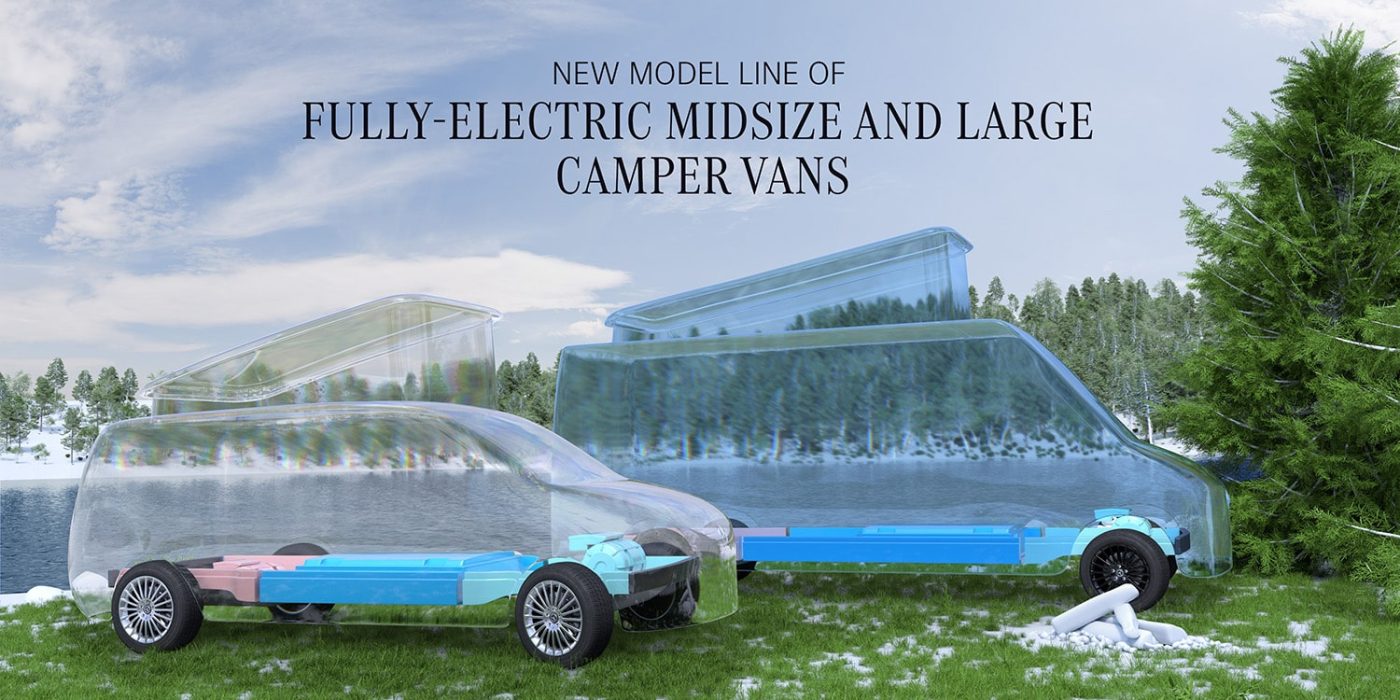
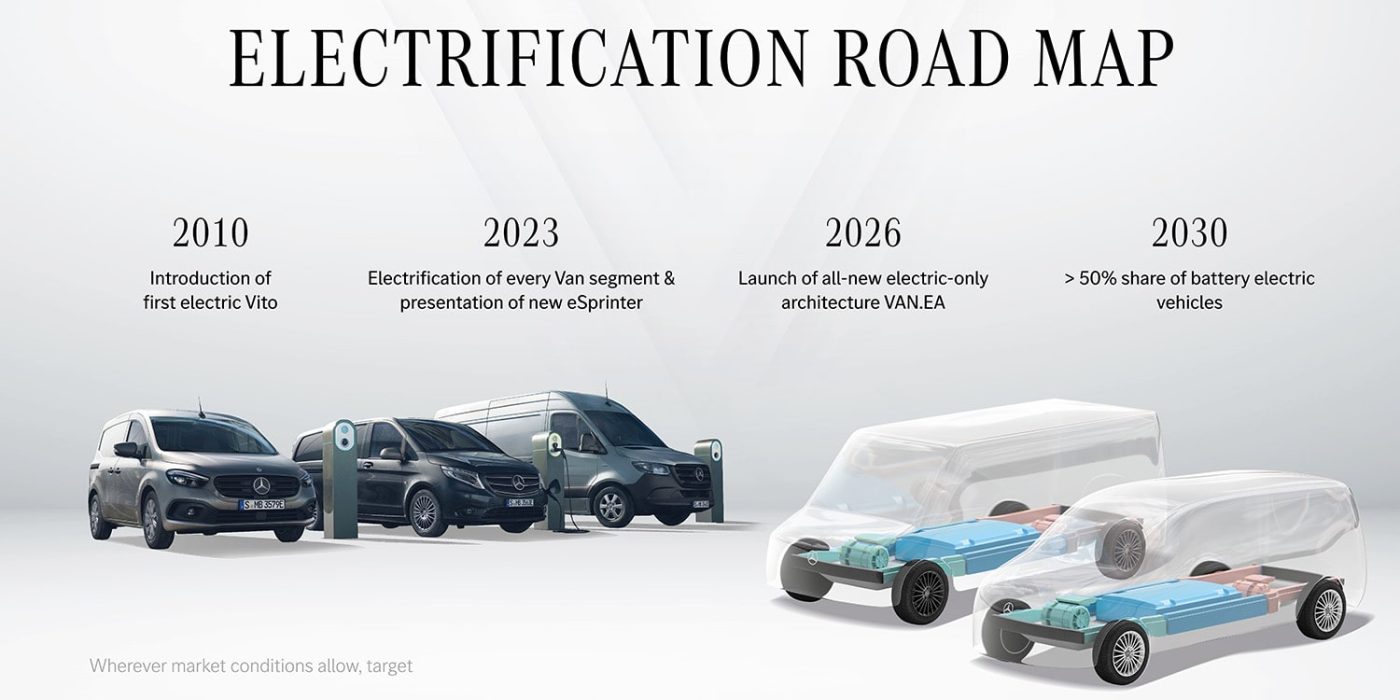
For the luxury vans for private customers, Mercedes will use the VAN.EA-P variant. Here, the manufacturer not only mentions the Mercedes-Benz Operating System (MB.OS) with various networking functions and autonomous driving systems according to Level 2 (with an upgrade to Level 3 by 2020) as distinguishing features, but also the “planned range of well over 500 kilometres”.
Conversely, the VAN.EA-C stands for “premium commercial vans in the midsize and large segments. It is the ideal base for customers who value functionality, reach, payload and cargo space. With its modular and scalable design, the architecture is tailor-made for different configurations and upfitter solutions: From courier, express and parcel delivery (CEP) vehicles to ambulances or eGrocery vans, from municipal vans or flatbeds to lifting platforms or recreational vehicles (RV),” says Mercedes.
Mercedes plan global production
“According to the ‘electric-only’ strategy, VAN.EA is developed from scratch as a purpose-built electric vehicle, fully leveraging the advantages of the new technology”, says Andreas Zygan, Head of Mercedes-Benz Vans Development. “Our target of more than 50% BEV share by 2030 goes hand in hand with a significant reduction in CO₂-emissions across the entire lifecycle of new vans.”
Mercedes-Benz Vans presented the global production of the VAN.EA models in January – at that time, however, it still mentioned 2025 as the start date. In addition to Europe (Düsseldorf, Ludwigsfelde, Jawor and Vitoria), the electric vans will also be built in the US and China. According to the company, “Europe is already the strongest market with a 60 per cent share of total sales worldwide. Mercedes‑Benz Vans wants to strengthen its position here. Looking ahead, substantial growth potential is being seen in the US for premium commercial large vans and in China for luxury private vans”.
Mercedes not only sees growth potential but also profit potential in these areas – because, similar to the passenger car division, the vans unit also wants to focus on “Top-End segments and the most profitable use cases of the different light commercial vehicle industries”.
“Our strategic plan for Mercedes-Benz is clear: leveraging technology and the power of our brand to elevate our market positioning and profitability. This applies not only to our luxury car business but also to our strategy for Vans”, says Ola Källenius, Chairman of the Board of Management of Mercedes-Benz Group AG. “Vans is a successful, fully integrated business division within Mercedes‑Benz with the freedom to make all the decisions necessary to cater to the individual needs of its customers. At the same time, the Vans business has full access to and the benefits from technology- and innovation-sharing with our cars business. Vans operates in an attractive business and enjoys a unique premium market position, enabling it to deliver strong returns that complement our luxury car business.”
By the way: Until the introduction of the VAN.EA, the current midsized vans will also be revised. That will also affect the EQV and eVito. There is talk of a “new exterior and interior look as well as a new MBUX generation” – again, to underpin the focus on luxury. A first teaser image shows a significantly larger front grille than before – somewhat based on the design of the S-Class.
mercedes-benz.com (VAN.EA), mercedes-benz.com (Strategy Update), mercedes-benz.com (EQV Facelift)




0 Comments